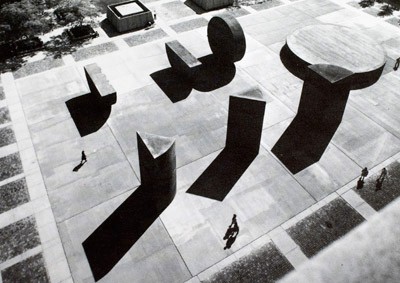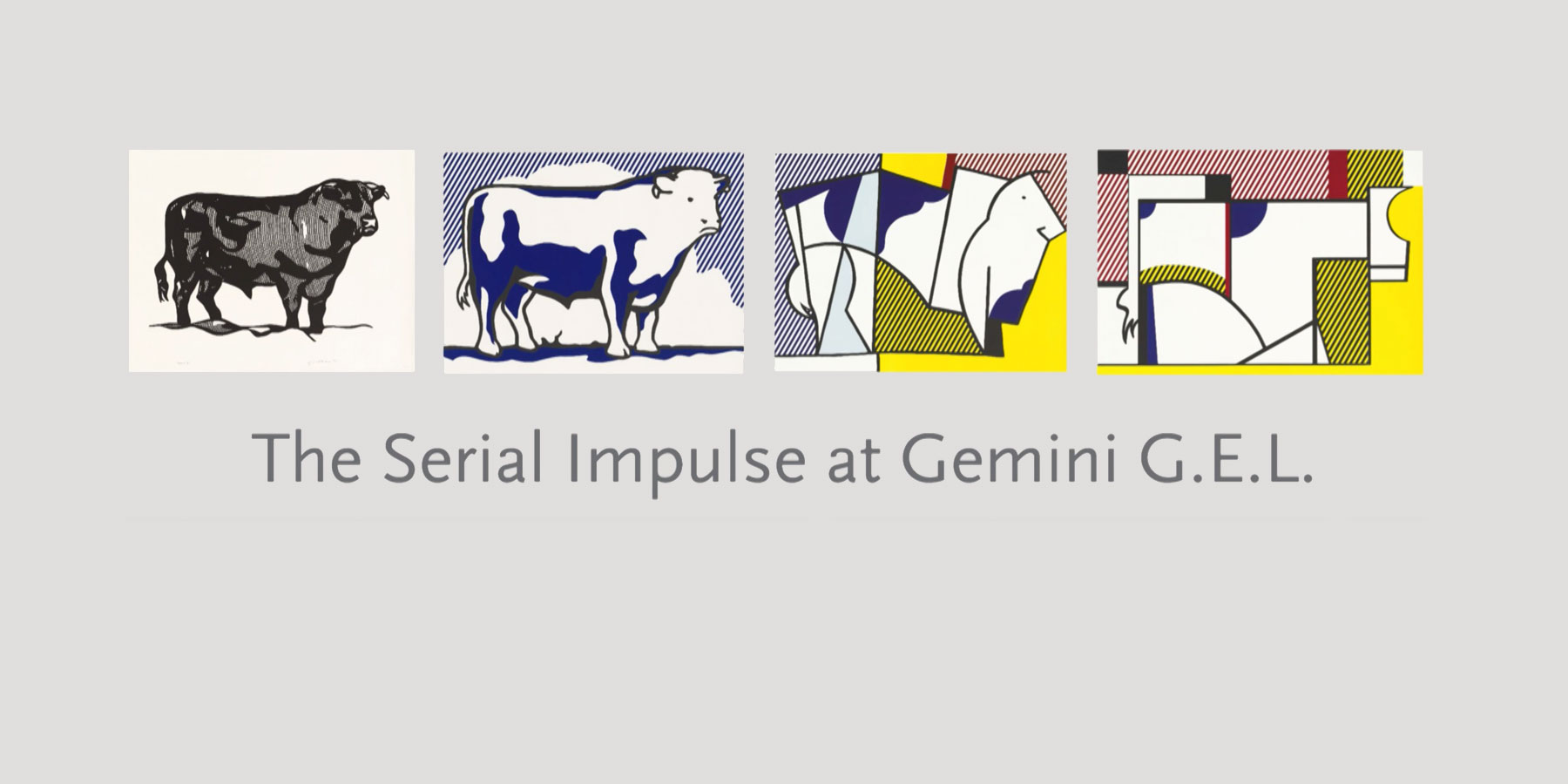Michael Heizer (American, born 1944) made Scrap Metal Drypoints using salvaged waste aluminum and zinc from the California aeronautical industry. He cut disks from sheets that bore evidence of physical wear and chemical reactions—scratches, scrapes, oxidation, and corrosion. Disk sizes were calculated according to a geometric theorem that dictates spatial equivalence: this—the combined surface area of the smaller segments—equals that—the surface area of the large circle. Heizer had been exploring variations of this geometric theorem in monumental earth projects and massive public sculptures such as This Equals That, 1976–1980. The plates for the Scrap Metal Dypoints were cut to size, and Heizer arranged the parts to illustrate the theorem in six permutations. The plates were inked and printed using a high-pressure hydraulic newspaper press. The series has, in Heizer’s words, “a pulse” conveyed by the rhythmic relationship between the parts and wholes and the diverse markings of the plates. Despite their junk yard origins, the Scrap Metal Drypoints evoke natural forms, large and small—lunar landscapes, microorganism colonies, or crystalline morphology—as well as ancient megalithic monuments.
Michael Heizer, Scrap Metal Drypoints, 1978
“We are a piecemeal society. We make big things out of little things. Our buildings are millions of fragments stuck together.”—Heizer, 1983

Aerial view of Michael Heizer, This Equals That, 1976–1980, State Capital Complex, Lansing, Michigan, commissioned by the state of Michigan. Photograph by Balthazar Korab.
Banner image: Michael Heizer, Scrap Metal Drypoint #6 (detail), 1978, drypoint, Gift of Gemini G.E.L. and the Artist, 1981. © Gemini G.E.L. and the Artist







